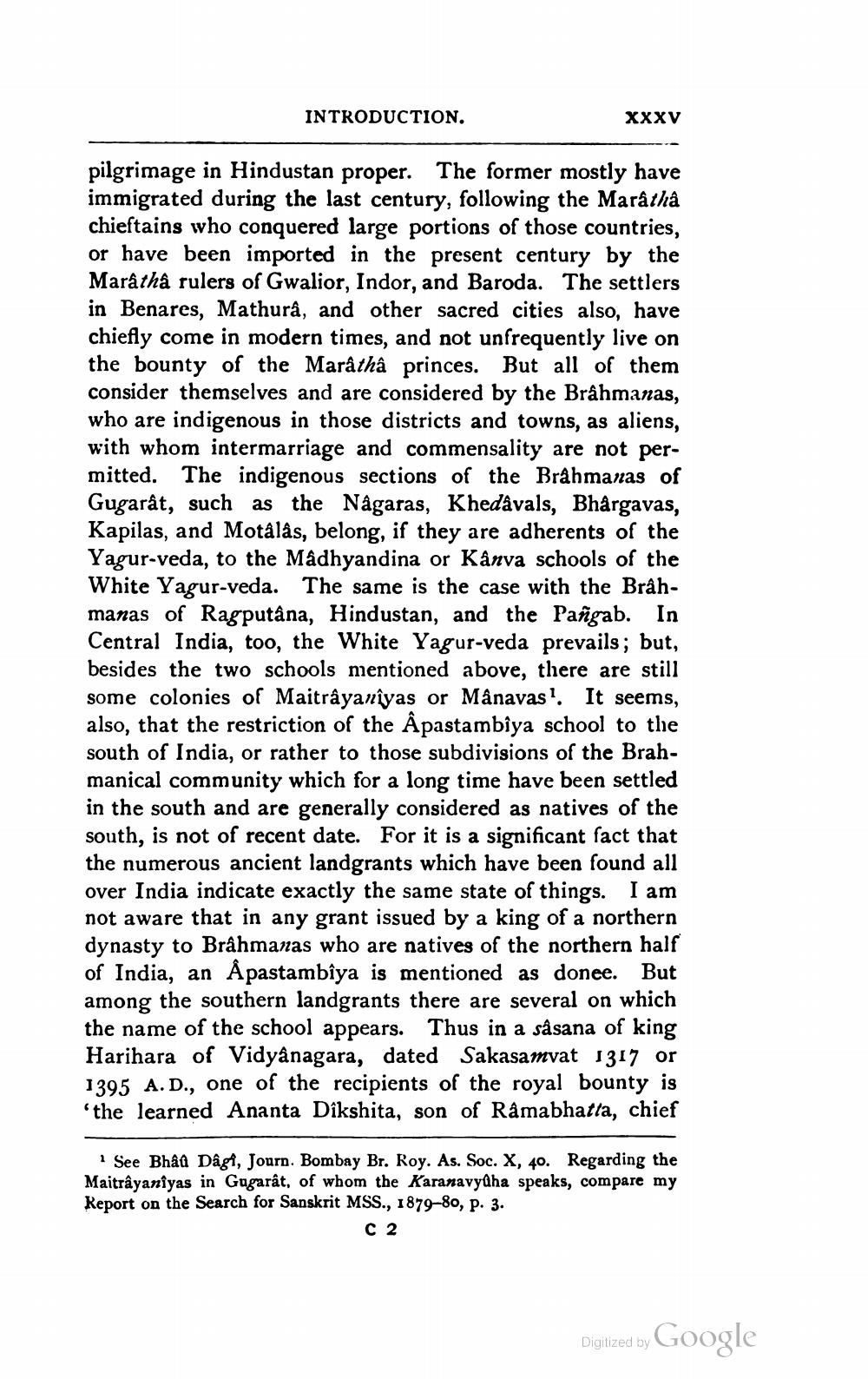________________
INTRODUCTION.
XXXV
pilgrimage in Hindustan proper. The former mostly have immigrated during the last century, following the Maratha chieftains who conquered large portions of those countries, or have been imported in the present century by the Maratha rulers of Gwalior, Indor, and Baroda. The settlers in Benares, Mathura, and other sacred cities also, have chiefly come in modern times, and not unfrequently live on the bounty of the Marathâ princes. But all of them consider themselves and are considered by the Brâhmanas, who are indigenous in those districts and towns, as aliens, with whom intermarriage and commensality are not permitted. The indigenous sections of the Brahmanas of Gugarât, such as the Nagaras, Khedávals, Bhargavas, Kapilas, and Motâlås, belong, if they are adherents of the Yagur-veda, to the Madhyandina or Kanva schools of the White Yagur-veda. The same is the case with the Brahmanas of Ragputâna, Hindustan, and the Pañgab. In Central India, too, the White Yagur-veda prevails; but, besides the two schools mentioned above, there are still some colonies of Maitrậyanîyas or Månavas? It seems, also, that the restriction of the pastambiya school to the south of India, or rather to those subdivisions of the Brahmanical community which for a long time have been settled in the south and are generally considered as natives of the south, is not of recent date. For it is a significant fact that the numerous ancient landgrants which have been found all over India indicate exactly the same state of things. I am not aware that in any grant issued by a king of a northern dynasty to Brâhmanas who are natives of the northern half of India, an Åpastambîya is mentioned as donee. But among the southern landgrants there are several on which the name of the school appears. Thus in a sâsana of king Harihara of Vidyanagara, dated Sakasamvat 1317 or 1395 A.D., one of the recipients of the royal bounty is the learned Ananta Dîkshita, son of Råmabhatta, chief
1 See Bhad Dagi, Journ. Bombay Br. Roy. As. Soc. X, 40. Regarding the Maitrậyaniyas in Gugarât, of whom the Karanavyâha speaks, compare my Report on the Search for Sanskrit MSS., 1879-80, p. 3.
C2
Digitized by Google




